Abstract
Data from the screening programme in British Columbia are used to test hypotheses about the natural history of cervical cancer, especially about progression and regression of preclinical lesions (dysplasia and carcinoma in situ). Three models are considered. A model without regression does not give an adequate fit of the data (P less than 0.001), and results in an implausible estimate of 33 years for the mean duration of pre-invasive lesions. A model with an equal regression rate at all ages still does not result in a good reproduction of the data. A good fit is achieved for a model with different regression rates in lesions that develop under and over age 34. Under age 34, 84% of the new lesions will regress spontaneously, with a 95% confidence interval of 76-92% regression. Over age 34, we estimate that 40% of the new lesions will regress. The average duration of dysplasia + CIS is 11.8 years, and the sensitivity of the Pap-smear is 80%. It is concluded that a considerable proportion of pre-invasive lesions in young women do not progress. The findings about progression and duration of pre-invasive lesions do not support the still prevailing tendency of frequently making Pap smears in young women.
Full text
PDF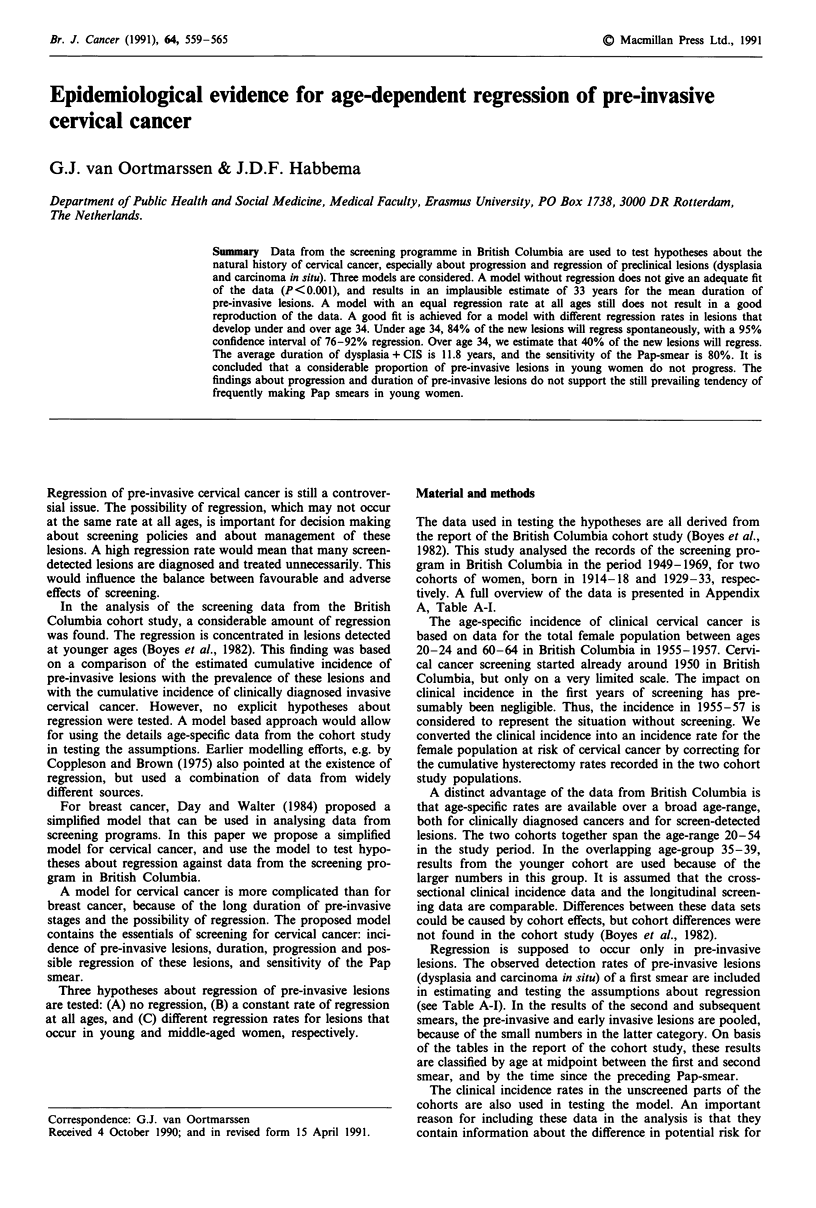
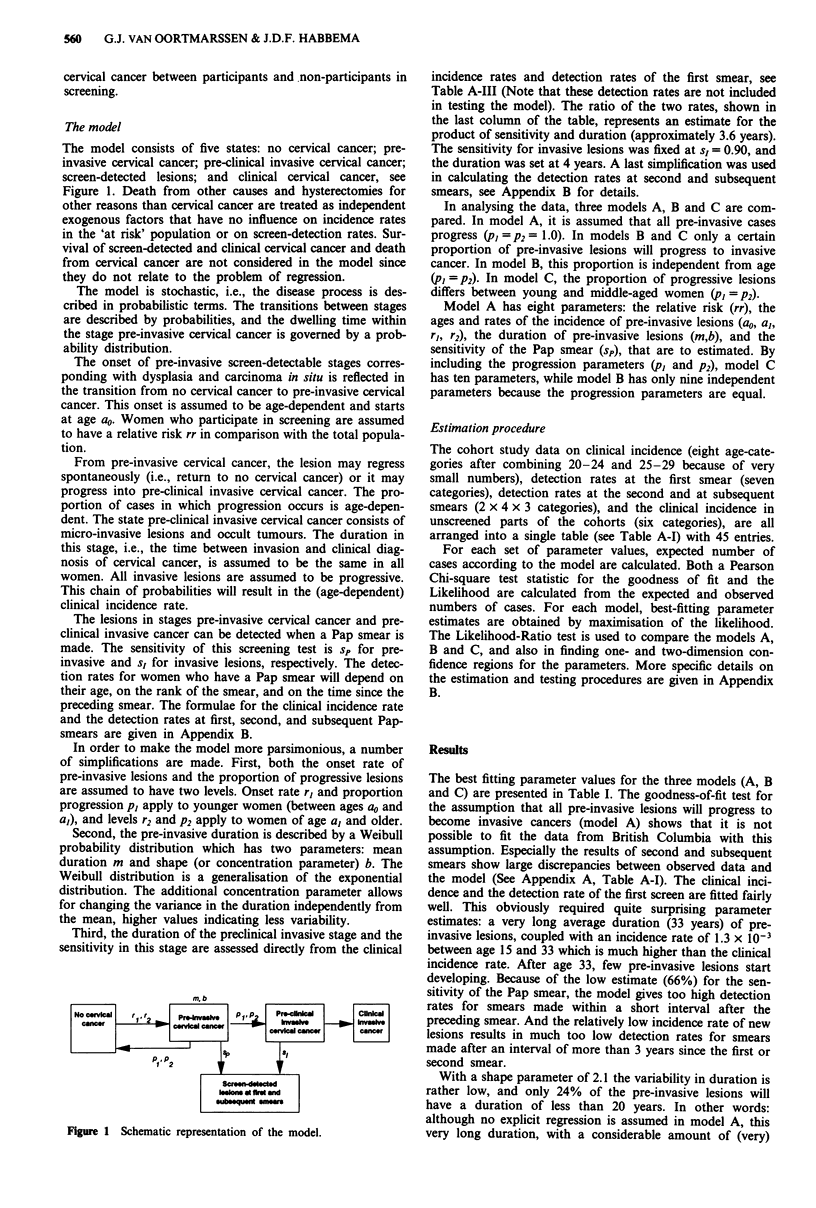
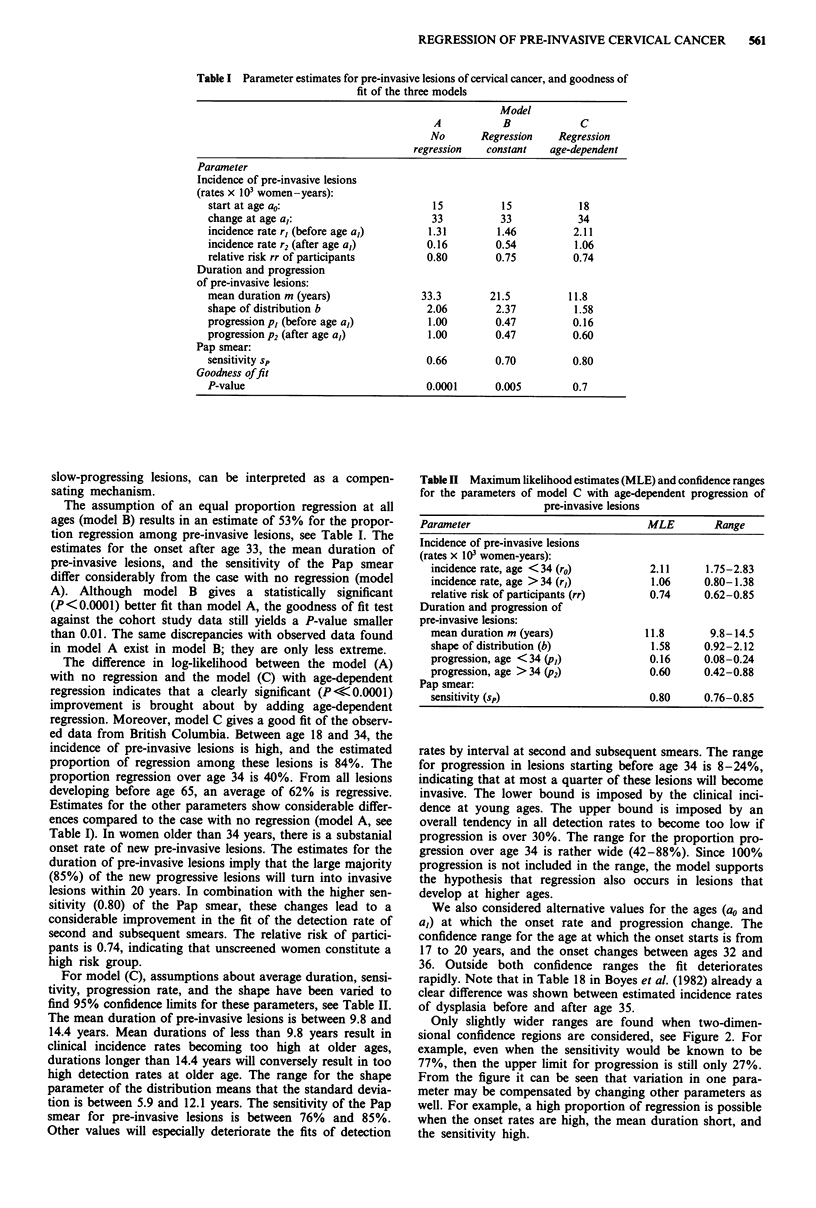
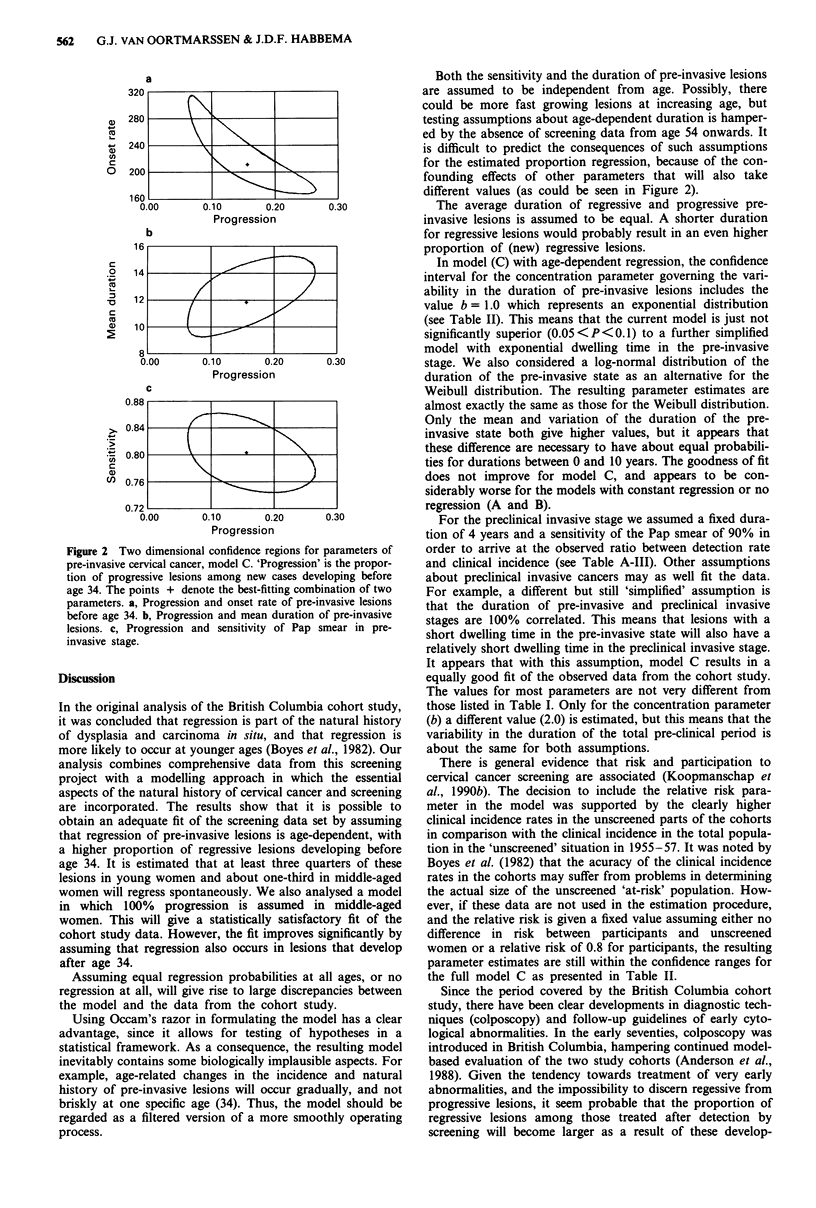
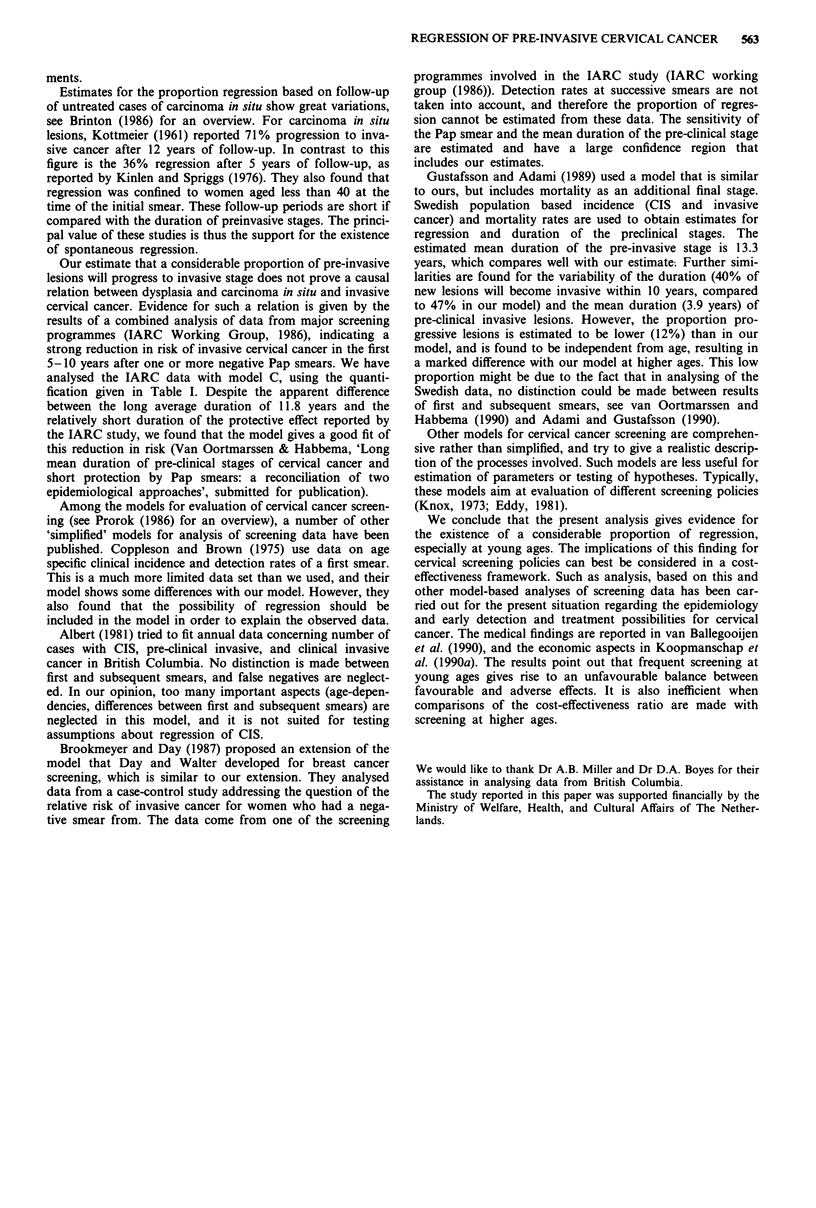
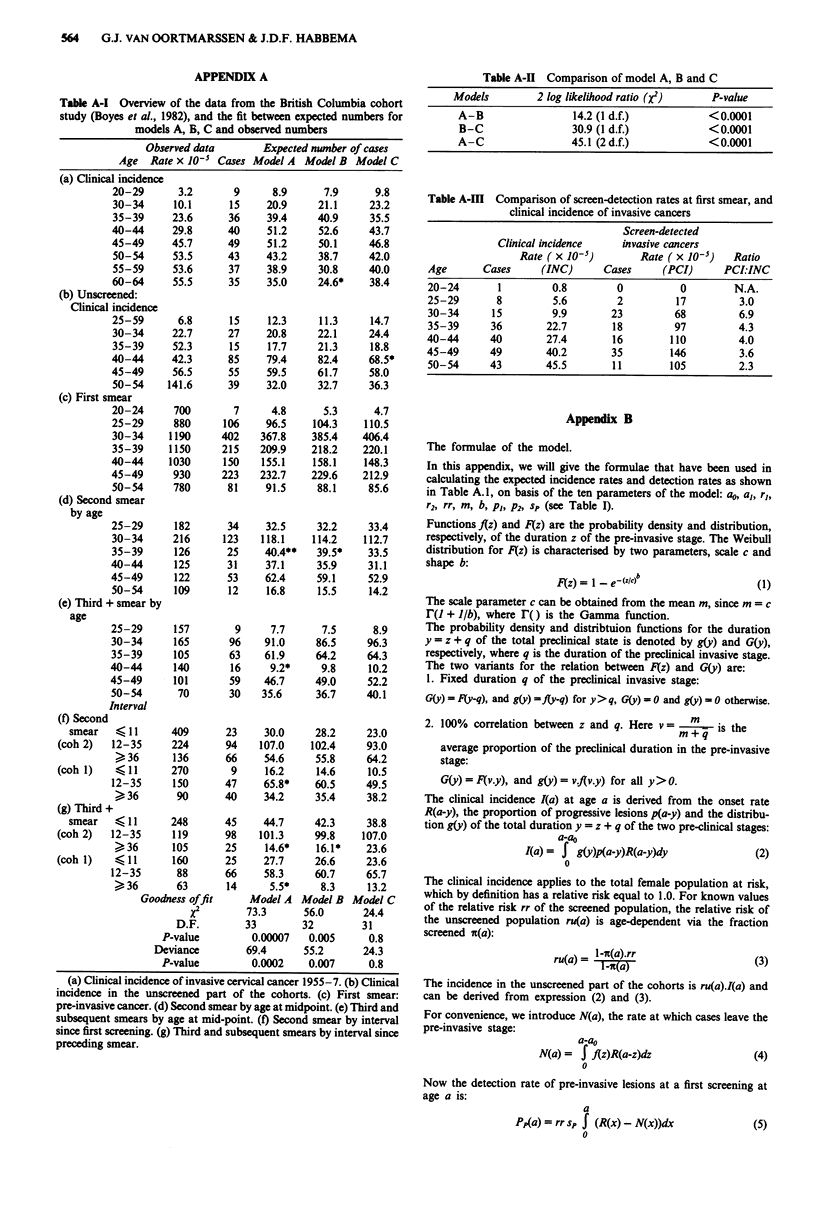
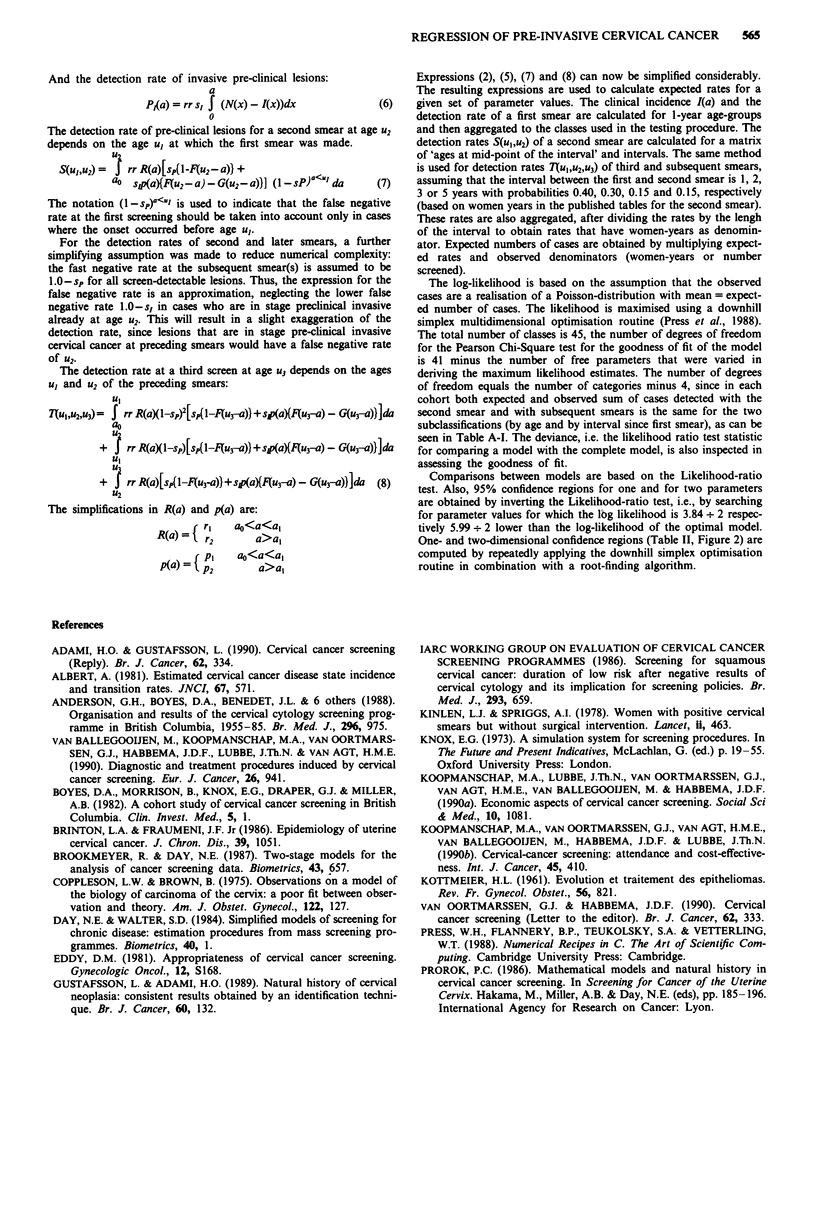
Selected References
These references are in PubMed. This may not be the complete list of references from this article.
- Albert A. Estimated cervical cancer disease state incidence and transition rates. J Natl Cancer Inst. 1981 Sep;67(3):571–576. [PubMed] [Google Scholar]
- Anderson G. H., Boyes D. A., Benedet J. L., Le Riche J. C., Matisic J. P., Suen K. C., Worth A. J., Millner A., Bennett O. M. Organisation and results of the cervical cytology screening programme in British Columbia, 1955-85. Br Med J (Clin Res Ed) 1988 Apr 2;296(6627):975–978. doi: 10.1136/bmj.296.6627.975. [DOI] [PMC free article] [PubMed] [Google Scholar]
- Boyes D. A., Morrison B., Knox E. G., Draper G. J., Miller A. B. A cohort study of cervical cancer screening in British Columbia. Clin Invest Med. 1982;5(1):1–29. [PubMed] [Google Scholar]
- Brinton L. A., Fraumeni J. F., Jr Epidemiology of uterine cervical cancer. J Chronic Dis. 1986;39(12):1051–1065. doi: 10.1016/0021-9681(86)90139-6. [DOI] [PubMed] [Google Scholar]
- Brookmeyer R., Day N. E. Two-stage models for the analysis of cancer screening data. Biometrics. 1987 Sep;43(3):657–669. [PubMed] [Google Scholar]
- Coppleson L. W., Brown B. Observations on a model of the biology of carcinoma of the cervix: a poor fit between observation and theory. Am J Obstet Gynecol. 1975 May 1;122(1):127–136. doi: 10.1016/0002-9378(75)90627-4. [DOI] [PubMed] [Google Scholar]
- Day N. E., Walter S. D. Simplified models of screening for chronic disease: estimation procedures from mass screening programmes. Biometrics. 1984 Mar;40(1):1–14. [PubMed] [Google Scholar]
- Eddy D. M. Appropriateness of cervical cancer screening. Gynecol Oncol. 1981 Oct;12(2 Pt 2):S168–S187. doi: 10.1016/0090-8258(81)90072-x. [DOI] [PubMed] [Google Scholar]
- Gustafsson L., Adami H. O. Natural history of cervical neoplasia: consistent results obtained by an identification technique. Br J Cancer. 1989 Jul;60(1):132–141. doi: 10.1038/bjc.1989.236. [DOI] [PMC free article] [PubMed] [Google Scholar]
- KOTTMEIER H. L. [The development and treatment of epitheliomas]. Rev Fr Gynecol Obstet. 1961 Dec;56:821–826. [PubMed] [Google Scholar]
- Kinlen L. J., Spriggs A. I. Women with positive cervical smears but without surgical intervention. A follow-up study. Lancet. 1978 Aug 26;2(8087):463–465. doi: 10.1016/s0140-6736(78)91457-5. [DOI] [PubMed] [Google Scholar]
- Koopmanschap M. A., van Oortmarssen G. J., van Agt H. M., van Ballegooijen M., Habbema J. D., Lubbe K. T. Cervical-cancer screening: attendance and cost-effectiveness. Int J Cancer. 1990 Mar 15;45(3):410–415. doi: 10.1002/ijc.2910450305. [DOI] [PubMed] [Google Scholar]
- van Ballegooijen M., Koopmanschap M. A., van Oortmarssen G. J., Habbema J. D., Lubbe K. T., van Agt H. M. Diagnostic and treatment procedures induced by cervical cancer screening. Eur J Cancer. 1990;26(9):941–945. doi: 10.1016/0277-5379(90)90615-z. [DOI] [PubMed] [Google Scholar]
- van Oortmarrsen G. J., Habbema J. D. Cervical cancer screening. Br J Cancer. 1990 Aug;62(2):333–335. doi: 10.1038/bjc.1990.290. [DOI] [PMC free article] [PubMed] [Google Scholar]


